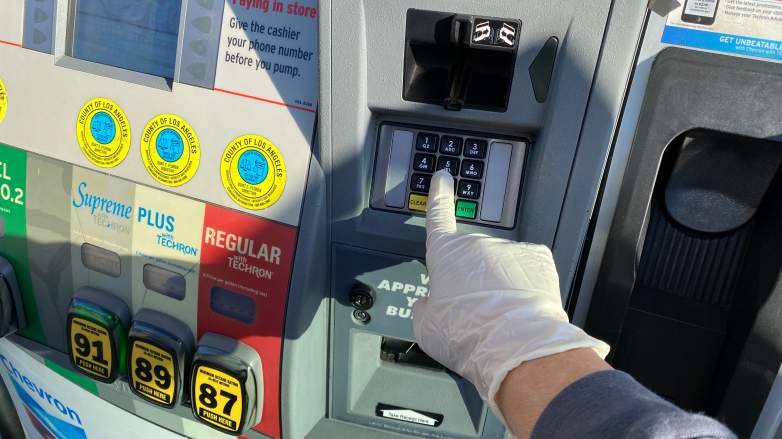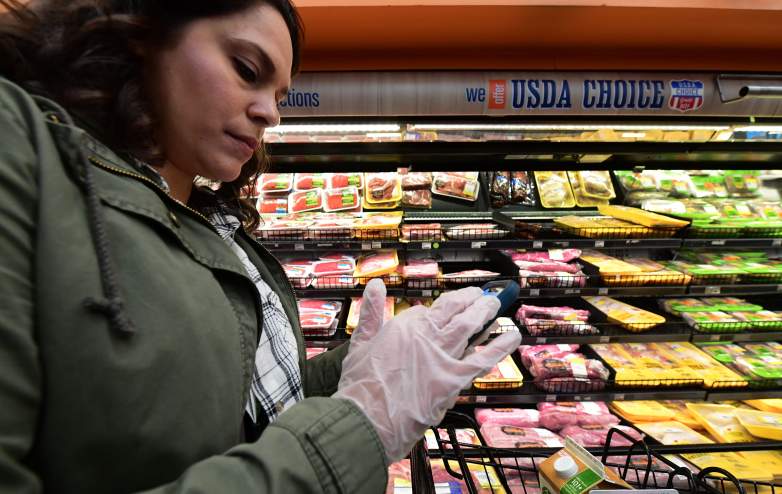
Getty A man walks at Hermosa beach in Los Angeles, California on March 19, 2020.
To fight the spread of coronavirus, California Mayor Eric Garcetti announced that he was implementing a “Safer At Home” order beginning and midnight on Friday. The lockdown is in place statewide until at least April 19.
Garcetti said during his press conference on Thursday evening, “We can not wait. We must act now. We are about to enter into a new way of living in Los Angeles for a period. Today is a day that will be seared into the story and the streets of this city. It will be a moment when everything changes.”
The state of California, which is home to an estimated 40 million people were then left wondering what exactly the “Stay at Home” order means. While already living in uncertain times, these new precautionary guidelines were not initially crystal clear to residents in California, because nobody has ever before experienced these types of restrictions. It’s important to understand these rules because if they aren’t followed, there may be fines or imprisonment enforced.
Here’s what you need to know about California’s “Safer at Home” order:
‘Safer at Home’ Is Not The Same As ‘Shelter-In-Place’ Or A ‘Lockdown’
In the Bay Area of California, residents are already under a mandatory “Shelter in Place” order. For 7 million people, this means that people are required to stay inside and can only go outside for necessities.
The “Safer at Home” order, encourages people to still go outside to take a walk, but while respecting social distancing, and not in groups.
“I think there’s been terrible terms out there, like lockdown,” Garcetti said. Nobody is locked down. We encourage you not to be locked down. This is not shelter-in-place like a school shooting. This is stay at home, because you’re safer at home. The only people who should be leaving home and going out are those whose jobs are critical to the safety, the health and security of the city, as well as the economy of recovery for us and the nation during this crisis.”
Garcetti said, “All businesses, including museums, malls, retail stores, for-profit companies and nonprofit organizations must stop operations that require workers to be present in person. And no public and private gatherings of any size that would occur outside of a single home will be allowed, with clear exceptions. I want to be clear about this, that the only time you should leave your home is for essential activities and needs — to get food, care for a relative or friend or a child, get necessary healthcare, go for a walk in the neighborhood.
What’s Still Open In California During ‘Safer At Home’

Gas station
As stated on California’s website, all essential services remain open, which includes the following:
Hardware Stores
Gas Stations and auto mechanic services
Pharmacies
Grocery Stores
Convenience Stores
Pet Supply Stores
Restaurants offering take-out and delivery services
Banks and related financial institutions
Laundromats
Taxi services, and transportation providers such as Uber and Lyft
Plumbing and electrical service businesses, exterminators,
Businesses that mail or ship supplies
Childcare facilities that have 12 or fewer children in the same group each day, and do not mix with other groups
What Residents Can Do During ‘Safer At Home’

Grocery shopping
While limited in scope, there are still plenty of things people in California can do while following the guidelines:
Go to the grocery store
Go to medical appointments
Go to the pharmacy to pick up medications and other healthcare necessities
Take walks, ride your bike, exercise in nature — just keep at least 6 feet between you and other people
What People Should NOT Do During ‘Safer at Home’

Big party
Unfortunately, many semblances of normal life are being temporarily revoked for the next month. These are what residents of California are not allowed to do:
Go to work unless you’re providing an essential service mentioned in the order
Visit friends & family if there’s no emergency
Hang out with people at less than a 6-foot distance
Travel to and from a job outside the state of California, unless it’s a necessity or emergency.
Visit loved ones sick in the hospital, nursing facility or other residential care
READ NEXT: Why Wasn’t Dr. Anthony Fauci at Today’s White House Coronavirus Press Conference?
